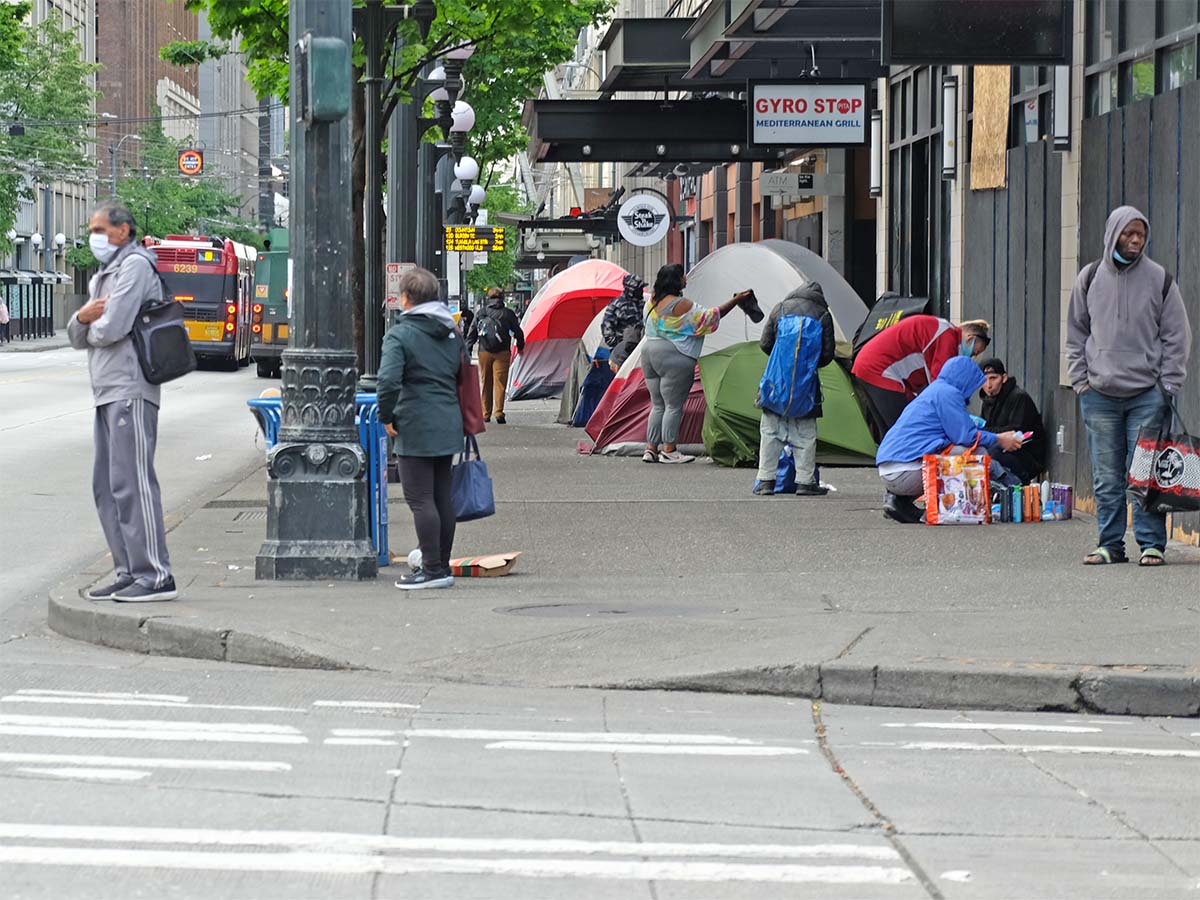News
The Seattle Times, Editorial: Hopes for downtown recovery depend on safety and security
Posted on

This editorial was originally published in The Seattle Times on Friday, Aug. 27.
By The Seattle Times editorial board
You may have to squint a bit, but the hustle and bustle of visitors at Pike Place Market, the tourists milling about hotel lobbies and the roar of cheering Sounders fans can make it feel like old times in downtown Seattle. Walk a little farther, though, and it’s easy to find empty sidewalks, boarded storefronts and people living on the street.
Still, after more than a year of scant activity, there is hope and confidence among merchants and business groups that recovery is around the corner. But even the rosiest outlook is tempered by the uncertainty surrounding the pandemic’s new delta variant wrinkle and by the dysfunction in city government that has not met the challenge of the homeless and allowed street crime to thrive.
Only one of those challenges is beyond voters’ control, and it’s critical they pay attention.
From Northgate to Rainier Valley, every neighborhood contributes to Seattle’s unique identity, but downtown is unquestionably the city’s financial driver. Before the pandemic, it accounted for more than half the jobs and tax revenue in the city and helped attract tourism that generated $11.7 billion in total economic impact, according to Visit Seattle.
A healthy downtown is vital to the city’s future, said Downtown Seattle Association President Jon Scholes.
“It doesn’t just matter to these 3 square miles, it matters to the 80-plus square miles and the quality of life and infrastructure and services around the city,” he said. “We’ve passed all of these tax levies for universal pre-K, and transit and affordable housing and parks, that all have presumed the downtown was an economic engine.”
Right now, that engine is sputtering. The DSA’s tracking of the downtown recovery shows mixed results. While there is a steady climb over the last few months in the number of visitors coming back, as well as hotel demand and general foot traffic, office workers have yet to return in any significant way.
The downtown population has hit a new high this year, with record occupancy topping pre-COVID numbers and more than 250 new businesses have opened. Still, almost 500 have closed their doors since January 2020.
If downtown business is to recover, everyone must work together. From the city streamlining permits to make it easier to set up shop, to landlords recognizing that the cost of offering more affordable rents is offset by the added value that a unique street-level business can bring.
Most important, for downtown not only to regain lost ground but to continue to grow, the city’s residents, business operators and employees must feel safe and secure.
In this regard, voters have a clear choice between candidates for city offices. Some are content with the status quo of people languishing in tent encampments and repeated threats of violence by a dangerous few while others would strike a balance between compassion and the need for accountability. This editorial board will be highlighting some of these differences in city races in the weeks before the Nov. 2 election.
The question of downtown’s future direction is one that is a stark contrast between the two candidates for mayor. This editorial board has endorsed former city Councilmember Bruce Harrell, who will represent the entire city’s best interests but clearly understands the unique role the downtown plays as an economic engine and gateway to our region. The other candidate, Councilmember M. Lorena González, has demonstrated an indifference to this reality, even snubbing the Downtown Seattle Association’s candidate questionnaire.
Voters, pay attention. The city needs leaders who are ready to step up and face these challenges. Without them, optimism about downtown’s future won’t just be tempered, it will be extinguished.
The Seattle Times editorial board members are editorial page editor Kate Riley, Frank A. Blethen, Luis Carrasco, Alex Fryer, Jennifer Hemmingsen, Mark Higgins, Derrick Nunnally and William K. Blethen (emeritus).